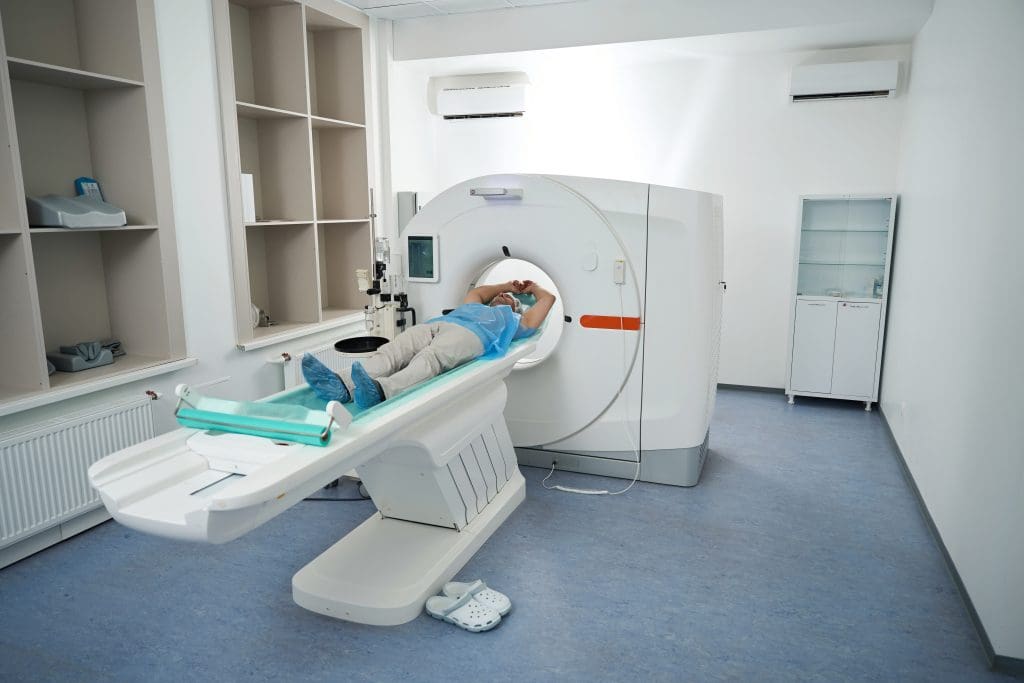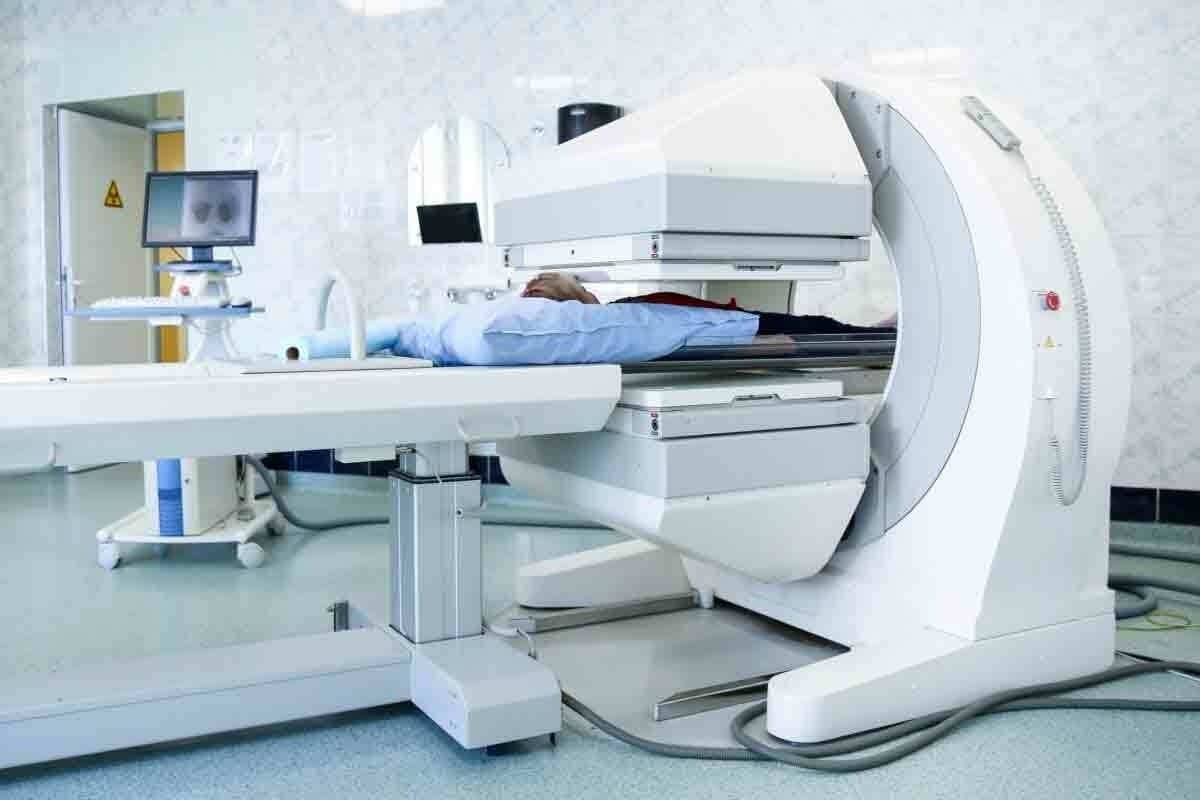Last Updated on November 27, 2025 by Bilal Hasdemir
Heart disease is one of the leading causes of death worldwide, affecting millions of people every year. Nuclear cardiology procedures, such as cardiac stress tests, play a vital role in diagnosing and treating heart problems. Patients often ask about the nuclear cardiology procedure duration, which can vary depending on the type of test. Most nuclear stress tests take between 2 and 4 hours, including preparation, imaging, and recovery time, though the actual exercise or medication portion usually lasts only a few minutes.
Getting a nuclear cardiology procedure can be scary, and many wonder how long it lasts. This article will dive into cardiac stress tests, covering their length, prep, and what happens during and after.
Key Takeaways
- A nuclear cardiology procedure is a diagnostic test used to evaluate heart function.
- Cardiac stress tests are a type of nuclear cardiology procedure.
- The duration of a stress test can vary based on several factors.
- Preparation is key to a successful stress test.
- Understanding what to expect can help reduce anxiety.
Understanding Nuclear Cardiology: The Basics

Nuclear cardiology uses tiny amounts of radioactive tracers to see the heart’s structure and function. It’s a key tool for diagnosing and managing heart diseases. We use a special scan to check how well the heart muscle works, even when it’s stressed.
Definition and Purpose of Nuclear Cardiology
Nuclear cardiology is a part of cardiology that uses nuclear medicine to diagnose and manage heart diseases. Its main goal is to check the heart’s function and blood flow, focusing on the coronary arteries. This helps find areas of the heart that might not get enough blood, a sign of coronary artery disease.
Common Nuclear Cardiology Procedures
There are several nuclear cardiology procedures, with the nuclear stress test being the most common. This test injects a small amount of radioactive material into the blood. A special camera then tracks this material to create images of the heart. Other procedures include myocardial perfusion imaging and cardiac positron emission tomography (PET) scans.
How Nuclear Imaging Works
Nuclear imaging detects the radiation from the radioactive tracer in the blood. The tracer builds up in the heart muscle based on blood flow. A gamma camera picks up this radiation to make images of the heart.
Types of Cardiac Stress Tests Explained
It’s important for patients and to know about cardiac stress tests. These tests check how well the heart works when it’s stressed. This stress can come from exercise or medicine.
Exercise Stress Tests
Exercise stress tests, also known as treadmill tests, are very common. You walk on a treadmill or bike while your heart is checked. The test gets harder to stress your heart more.
Key aspects of exercise stress tests include:
- Monitoring of heart rate and rhythm
- Assessment of blood pressure response
- Evaluation of symptoms such as chest pain or shortness of breath
Pharmacological Stress Tests
Pharmacological stress tests are for those who can’t exercise. They use medicine to make the heart work hard. This medicine makes blood flow to the heart, helping find heart disease.
Pharmacological stress tests are useful for:
- Patients with mobility issues
- Those who can’t get their heart rate up with exercise
Nuclear Stress Tests
Nuclear stress tests mix exercise or medicine with a tiny bit of radioactive material. This material is absorbed by the heart, allowing for images of the heart at rest and under stress.
These images show if there’s reduced blood flow to the heart, which can mean heart disease.
Echocardiogram Stress Tests
An echocardiogram stress test, or stress echo, uses sound waves to see the heart before and after stress. It can find problems with heart valves and how the heart moves under stress.
Here’s a summary of the different types of cardiac stress tests in a comparative format:
| Type of Stress Test | Method | Key Features |
| Exercise Stress Test | Physical exercise on a treadmill or bike | Monitors heart rate, ECG, and symptoms |
| Pharmacological Stress Test | Medication to simulate exercise effects | Useful for patients unable to exercise |
| Nuclear Stress Test | Radioactive tracer with exercise or medication | Images heart muscle blood flow |
| Echocardiogram Stress Test | Ultrasound before and after stress | Assesses heart structure and function |
How Long Does It Take to Do a Stress Test: Complete Timeline
A stress test’s time includes getting ready and recovering. Knowing the whole process helps patients plan their day better.
Pre-Test Preparation Time
Before the test starts, patients get ready. They change clothes, have electrodes put on their chest, and might get an IV for a nuclear test. This prep time is about 30 to 60 minutes.
Actual Testing Duration
The test itself takes different times. An exercise test lasts 7 to 12 minutes. A nuclear test might be similar, but it also includes imaging before and after stress.
Post-Test Monitoring Period
After the test, patients are watched to make sure their heart and blood pressure are okay. This post-test monitoring period is about 10 to 30 minutes.
Total Time Commitment for Different Test Types
The total time commitment for a stress test varies. Here’s a table showing typical times for different tests:
| Type of Stress Test | Pre-Test Preparation | Actual Testing | Post-Test Monitoring | Total Time |
| Exercise Stress Test | 30-60 minutes | 7-12 minutes | 10-30 minutes | 1-2 hours |
| Nuclear Stress Test (One-Day Protocol) | 60-90 minutes | 30-60 minutes | 30-60 minutes | 2-4 hours |
| Nuclear Stress Test (Two-Day Protocol) | 60-90 minutes (each day) | 30-60 minutes (each day) | 30-60 minutes (each day) | 2-4 hours (each day) |
Knowing these times helps patients and their families plan better. It makes the stress test process smoother.
The Bruce Protocol: Standard Treadmill Stress Test Method
The Bruce Protocol has been a key tool in cardiology for many years. It’s the main way to test heart health through treadmill exercises. It tracks a patient’s heart activity during exercise.
Stages of the Bruce Protocol
The Bruce Protocol has different stages, each getting harder. It starts easy and gets tougher every few minutes.
- Stage 1: Begins at 1.7 mph and a 10% grade.
- Stage 2: Increases to 2.5 mph and a 12% grade.
- Stage 3: Further increases to 3.4 mph and a 14% grade.
- Stage 4 and beyond: Continues with incremental increases in speed and incline.
METs and Intensity Levels
The Bruce Protocol’s intensity is measured in METs. METs show how much energy different activities use.
- Low intensity: 1-3 METs.
- Moderate intensity: 3-6 METs.
- High intensity: 6-10 METs or more.
The test can go up to 15 METs or more, depending on the stage.
Duration of Each Stage
Each stage lasts for 3 minutes. This lets the intensity build up slowly.
- Total test duration: Varies based on the individual’s performance and the maximum stage achieved.
Modified Bruce Protocol Options
For those who can’t start at the usual intensity, there’s a modified Bruce Protocol. It starts easier and gets harder gradually.
Nuclear Stress Test Procedure: Step-by-Step
Learning about the nuclear stress test can ease your worries. We’ll explain the steps, from getting ready to seeing the results.
Radiotracer Injection Process
The test starts with a small amount of radioactive material, called a radiotracer, injected into your vein. This material is absorbed by your heart muscle. It lets our imaging tools take clear pictures of your heart.
The injection is quick, taking just a few seconds. You might feel a tiny pinch or sting as the needle goes in.
Resting and Stress Images
After the injection, we take two types of images: at rest and under stress. The resting images are first, taken while you’re lying down. Our tools capture how your heart works when it’s not active.
For the stress images, you’ll either walk on a treadmill or take medication to mimic exercise. We inject the radiotracer again and take more images. These are compared to the resting images.
Total Time Commitment
The time you spend for a nuclear stress test varies. It depends on whether it’s a one-day or two-day protocol. Usually, you’ll be here for 2-4 hours.
Differences Between One-Day and Two-Day Protocols
In a one-day protocol, both types of images are taken on the same day, with a break in between. For a two-day protocol, the tests are on different days. This might be easier for some patients.
| Protocol Type | Total Time | Number of Visits |
| One-Day | 2-4 hours | 1 |
| Two-Day | 2-4 hours per day | 2 |
We’ll help you through every step. We want you to feel comfortable and well-informed.
Average Stress Test Duration by Age and Fitness Level
The time needed for a stress test varies. It depends on the person’s age and fitness level. Several factors can affect how long the test takes.
Duration Expectations for Different Age Groups
Stress test times change with age. Younger people usually need less time because they can reach the heart rate faster.
For example, a young adult might finish in about 30 minutes. But an older person might take longer because of health issues or less fitness.
| Age Group | Average Test Duration |
| 20-40 years | 30-45 minutes |
| 40-60 years | 45-60 minutes |
| 60+ years | 60-90 minutes |
How Fitness Level Affects Test Length
How fit you are also affects the test’s length. Fitter people reach their heart rate faster, making the test shorter.
On the other hand, less fit people might take longer to reach the heart rate. This makes the test longer.
Special Considerations for Elderly Patients
Elderly patients need special care during stress tests. They might have health issues or move slower. This could mean the test is done differently or slower.
They also might need more time to get ready and recover. This adds to the test’s overall time.
What Happens If You Don’t Reach Target Heart Rate
If you don’t hit your target heart rate, the test might be longer or changed. Sometimes, medicine is used to mimic exercise.
This makes sure the test works well, even if you can’t exercise enough.
Preparing for Your Nuclear Cardiology Procedure
To make your nuclear cardiology procedure smooth, it’s key to prepare well. Good preparation helps get accurate results and makes the process more comfortable for you.
Dietary Restrictions Before the Test
Following dietary restrictions is a big part of getting ready. Avoid caffeine and some medications for 24 hours before the test. Also, eat a light meal or snack a few hours before the test, not a heavy one.
Drink plenty of water to stay hydrated. But, make sure to follow your healthcare provider’s advice on how much to drink.
Medication Adjustments
Adjusting your medications is also important. Tell your healthcare provider about all your medications, including supplements. Some might need to be changed or stopped before the test for accurate results.
Your healthcare provider will tell you how to manage your medications. It’s important to follow these instructions to avoid problems.
What to Wear and Bring
Wear comfy clothes and shoes for exercise if you’re doing a stress test. Avoid jewelry, like necklaces, as they might get in the way of the equipment.
Bring your medications, medical records, and ID. Also, bring any previous test results or images if asked by your healthcare provider.
Common Pre-Test Anxiety and How to Manage It
Feeling anxious before a test is normal. It’s okay to feel worried, and it’s natural to have questions. Try relaxation techniques like deep breathing or meditation. Talking to your healthcare provider can also help.
The nuclear cardiology team is there to make you comfortable. If you have questions or concerns, ask them.
What Happens During a Cardiac Stress Test
A cardiac stress test checks how well your heart works under stress. This stress is usually caused by exercise or medicine.
Equipment and Monitoring Devices Used
During a cardiac stress test, we use special equipment to watch your heart. An electrocardiogram (ECG) tracks your heart’s electrical signals. We also check your blood pressure and might use imaging like echocardiography or nuclear imaging.
The Exercise or Medication Phase
The test can involve exercise on a treadmill or bike, or medicine to mimic exercise. We watch your heart rate and blood pressure to see how your heart reacts to stress.
The exercise part makes your heart rate and blood pressure go up, like when you’re active. If you can’t exercise, we use medicine to get a similar effect.
When and Why Tests Are Stopped
We stop the test if you have symptoms like chest pain or dizziness. We also stop if your ECG changes a lot or if your blood pressure gets too high or low.
Your safety is our top priority. We keep a close eye on you during the test to stop it if needed.
Common Sensations and Experiences During Testing
You might feel tired, muscle strain, or a fast heartbeat during the test. Some people get anxious or stressed, but we’re here to help.
Feeling flushed or warm is common, too, if you’re on medication. These feelings usually go away after the test is over.
Understanding Stress Test Results: What They Mean
Stress test results are key to knowing how your heart handles stress. We’re here to help you understand them. These results give insights into your heart’s function. They help find problems and guide treatment.
Normal vs. Abnormal Results
A normal stress test means your heart works well under stress. It shows no big signs of heart problems. But, an abnormal result might mean you have heart disease or other heart issues.
It’s important to know that an abnormal result doesn’t always mean a big problem. More tests might be needed to find out what’s going on.
Reading ECG Changes
An electrocardiogram (ECG) is used during a stress test. It checks your heart’s electrical activity. We look for changes in the ECG tracing.
Changes like ST-segment depression or elevation can show heart problems. Our cardiologists look at these changes with your health and history in mind.
Interpreting Nuclear Imaging Findings
Nuclear stress tests use a radioactive material to see your heart’s blood flow. We look at images to find areas with less blood flow. This might show blockages or damaged heart tissue.
The findings help us understand how serious your condition is. Then, we can plan the best treatment for you.
False Positives and False Negatives
Stress tests are usually very accurate. But, sometimes they can show false positives or negatives. A false positive might show a problem that’s not there, causing worry. A false negative might miss a real problem.
We think about these possibilities when we look at your results. We might suggest more tests to be sure.
Understanding your stress test results is key to heart health. We’re here to help you through it. We’ll answer your questions and make sure you get the care you need for a healthy heart.
Target Heart Rates and Performance Metrics in Stress Testing
Stress testing is more than just reaching a heart rate goal. It’s about understanding key performance indicators for heart health.
Age-Related Target Heart Rates
During a stress test, we watch the target heart rate closely. This rate changes with age. It’s 85% of the maximum heart rate, which is 220 minus your age.
For example, a 40-year-old’s maximum heart rate is 180 bpm. Their target heart rate is 153 bpm.
Here’s a breakdown of target heart rates by age:
| Age | Maximum Predicted Heart Rate (bpm) | Target Heart Rate (85% of Maximum) |
| 30 | 190 | 161.5 |
| 40 | 180 | 153 |
| 50 | 170 | 144.5 |
| 60 | 160 | 136 |
Duke Treadmill Score Explained
The Duke treadmill score is another key metric. It’s based on the stress test results. It’s calculated by exercise time, ST deviation, and angina index.
The Duke treadmill score is a valuable tool for risk assessment. It looks at exercise time and heart muscle blood flow.
METs and Functional Capacity Assessment
METs (Metabolic Equivalents) are important in stress testing. One MET is at rest. It shows a patient’s functional capacity.
- Less than 5 METs: Poor functional capacity
- 5-8 METs: Moderate functional capacity
- Greater than 8 METs: Good functional capacity
Blood Pressure Response During Testing
Blood pressure response is also monitored. A normal response increases with exercise and drops during recovery. An abnormal response may show heart disease.
Understanding these metrics helps us accurately read stress test results. It guides patient care decisions.
When Is a Nuclear Stress Test Necessary?
To decide if a nuclear stress test is needed, we look at several things. These include a patient’s medical history, current symptoms, and risk for heart disease. This test helps us see how the heart works under stress. It’s often used to find coronary artery disease or check if treatments are working.
Signs You May Need a Stress Test
There are signs that might mean you need a stress test. These include chest pain, shortness of breath, or symptoms that suggest heart disease. We also think about age, family history of heart disease, and other heart risk factors.
Some symptoms that might lead to a stress test are:
- Chest pain or angina
- Shortness of breath
- Dizziness or lightheadedness
- Fatigue or decreased exercise tolerance
Risk Factors That Prompt Testing
Some risk factors make a nuclear stress test more likely. These include a family history of heart disease, high blood pressure, high cholesterol, diabetes, and smoking. We also look at a patient’s lifestyle and how active they are when checking their heart risk.
| Risk Factor | Description |
| Family History | Having a first-degree relative (parent or sibling) with heart disease |
| High Blood Pressure | Consistently elevated blood pressure readings |
| High Cholesterol | Elevated levels of LDL (“bad”) cholesterol |
| Diabetes | Presence of diabetes mellitus, which increases cardiovascular risk |
| Smoking | Current or past smoking history |
Differences Between Regular and Nuclear Stress Tests
A nuclear stress test uses a small amount of radioactive material to create detailed images of the heart. This lets us see how the heart works and blood flows better. We use these tests when we need more detailed information about the heart.
The main differences between regular and nuclear stress tests are:
- Use of radioactive tracer
- Detailed imaging of heart function
- Ability to assess blood flow to the heart muscle
When Alternative Testing Methods Are Preferred
While nuclear stress tests are useful, other tests might be better in some cases. For example, patients who can’t do exercise stress tests might get pharmacological stress tests instead. Some patients might also benefit from other imaging like echocardiography or cardiac MRI.
By looking at each patient’s unique situation, we can pick the best test. This helps us make sure we get an accurate diagnosis and plan the best treatment.
Considerations for Nuclear Cardiology Procedures
When getting ready for nuclear cardiology tests, knowing the and insurance details is key. These tests can be pricey, and understanding the financial side is important.
Average of Different Stress Tests
The price of stress tests varies a lot. It depends on the test type, where it’s done, and where you are. A basic stress test might between $200 to $500.
Nuclear stress tests, which use special dyes, can more. They can range from $1,000 to $3,000 or more. This depends on the test’s complexity and the technology used.
| Type of Stress Test | Average Range |
| Standard Stress Test | $200 – $500 |
| Nuclear Stress Test | $1,000 – $3,000 |
| Stress Echocardiogram | $300 – $1,500 |
Key factors influencing insurance coverage include:
- The specific insurance plan and its coverage policies
- The medical justification for the procedure
- Whether the testing facility is in-network
Questions to Ask Your Provider
To manage better, ask your some questions. This includes:
- What is the estimated of the procedure?
- Is there a difference in between different types of stress tests?
- What are the out-of-pocket expenses for the procedure under my insurance plan?
- Are there any additional associated with the procedure, such as consultation fees or follow-up tests?
Financial Assistance Options
If you’re struggling financially, there are options. Some places offer help or discounts for those without insurance or with limited coverage. Non-profit groups also help with medical .
It’s important to ask about these options when talking to your or the billing office.
Conclusion: What to Expect After Your Nuclear Cardiology Procedure
After a nuclear cardiology procedure, many patients wonder about their recovery and what comes next. We get it, and we’re here to help. We want to guide and support you through this time.
Most patients can go back to their usual activities soon after the test. Some might feel a bit tired or sore where the injection was given. Always follow the care instructions from your and any follow-up appointments they suggest.
Your test results will be reviewed by a cardiologist. They will talk to you about what they found. If needed, you might have more tests or treatments. It’s okay to ask questions and clear up any doubts about your results or future care.
Knowing what to expect after a nuclear cardiology test helps patients manage their recovery better. Our team is dedicated to supporting you every step of the way.
FAQ
What is the difference between a regular stress test and a nuclear stress test?
A regular stress test uses ECG during exercise. A nuclear stress test uses a special dye to see heart function. Nuclear tests give more detailed info about your heart.
How does fitness level affect stress test duration?
Your fitness level really matters for stress test time. Fitter people can do more and go harder. Less fit people might get tired sooner.
What is the Bruce protocol for stress testing?
The Bruce protocol is a set way to do treadmill tests. It has stages that get harder and longer. The whole test is about 7-12 minutes, with each stage lasting 3 minutes.
How long does a typical stress test last?
A stress test usually takes 7-15 minutes. This depends on your fitness and the test type. But, you’ll be at the test site for about 1-2 hours.
What is a nuclear stress test, and how long does it take?
A nuclear stress test checks how well your heart works when stressed. It uses a treadmill or medicine. You’ll spend about 3-4 hours, including getting ready, the test, and aftercare.





